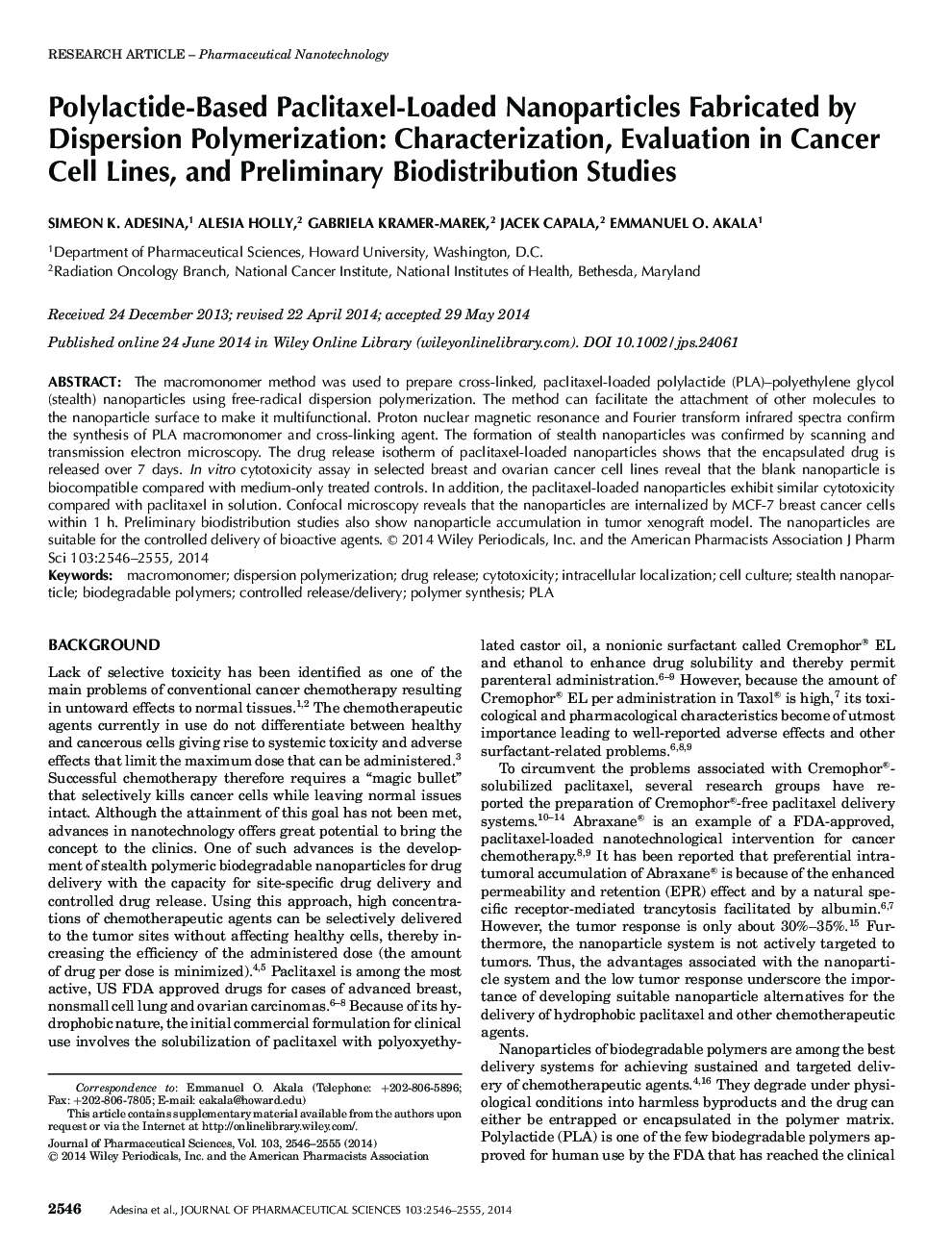| Article ID | Journal | Published Year | Pages | File Type |
|---|---|---|---|---|
| 10162333 | Journal of Pharmaceutical Sciences | 2014 | 10 Pages |
Abstract
The macromonomer method was used to prepare cross-linked, paclitaxel-loaded polylactide (PLA)-polyethylene glycol (stealth) nanoparticles using free-radical dispersion polymerization. The method can facilitate the attachment of other molecules to the nanoparticle surface to make it multifunctional. Proton nuclear magnetic resonance and Fourier transform infrared spectra confirm the synthesis of PLA macromonomer and cross-linking agent. The formation of stealth nanoparticles was confirmed by scanning and transmission electron microscopy. The drug release isotherm of paclitaxel-loaded nanoparticles shows that the encapsulated drug is released over 7 days. In vitro cytotoxicity assay in selected breast and ovarian cancer cell lines reveal that the blank nanoparticle is biocompatible compared with medium-only treated controls. In addition, the paclitaxel-loaded nanoparticles exhibit similar cytotoxicity compared with paclitaxel in solution. Confocal microscopy reveals that the nanoparticles are internalized by MCF-7 breast cancer cells within 1Â h. Preliminary biodistribution studies also show nanoparticle accumulation in tumor xenograft model. The nanoparticles are suitable for the controlled delivery of bioactive agents. © 2014 Wiley Periodicals, Inc. and the American Pharmacists Association J Pharm Sci 103:2546-2555, 2014
Keywords
Related Topics
Health Sciences
Pharmacology, Toxicology and Pharmaceutical Science
Drug Discovery
Authors
Simeon K. Adesina, Alesia Holly, Gabriela Kramer-Marek, Jacek Capala, Emmanuel O. Akala,
